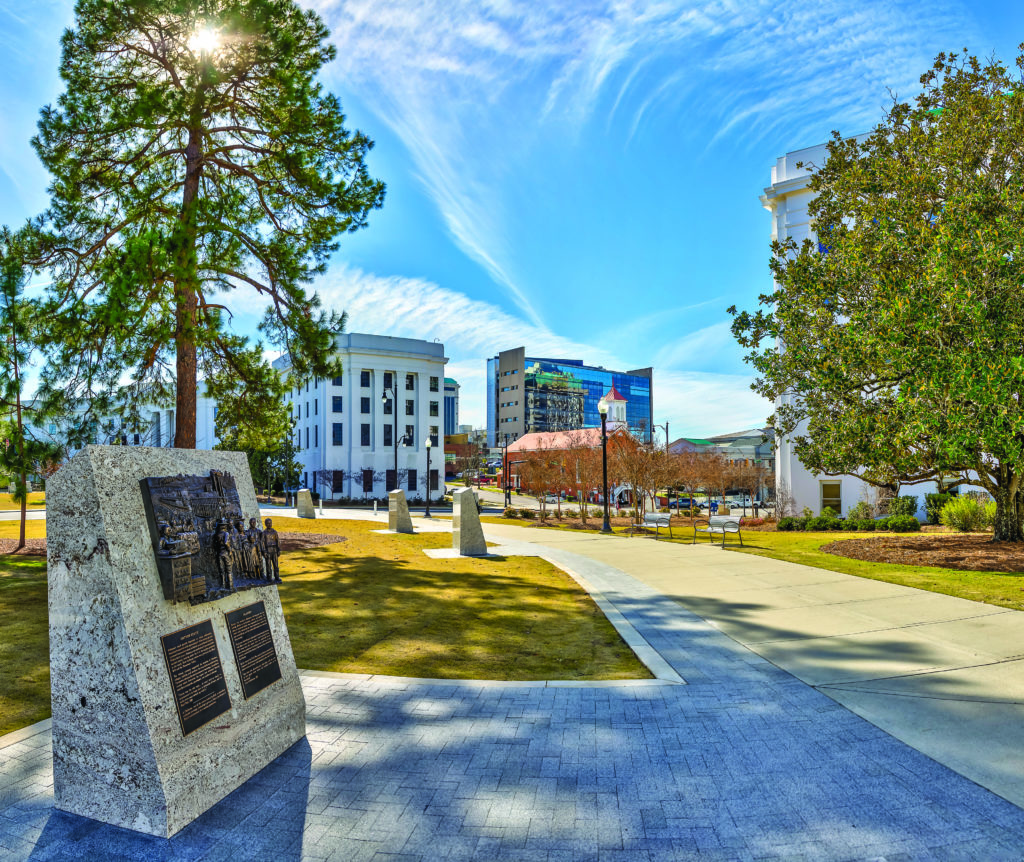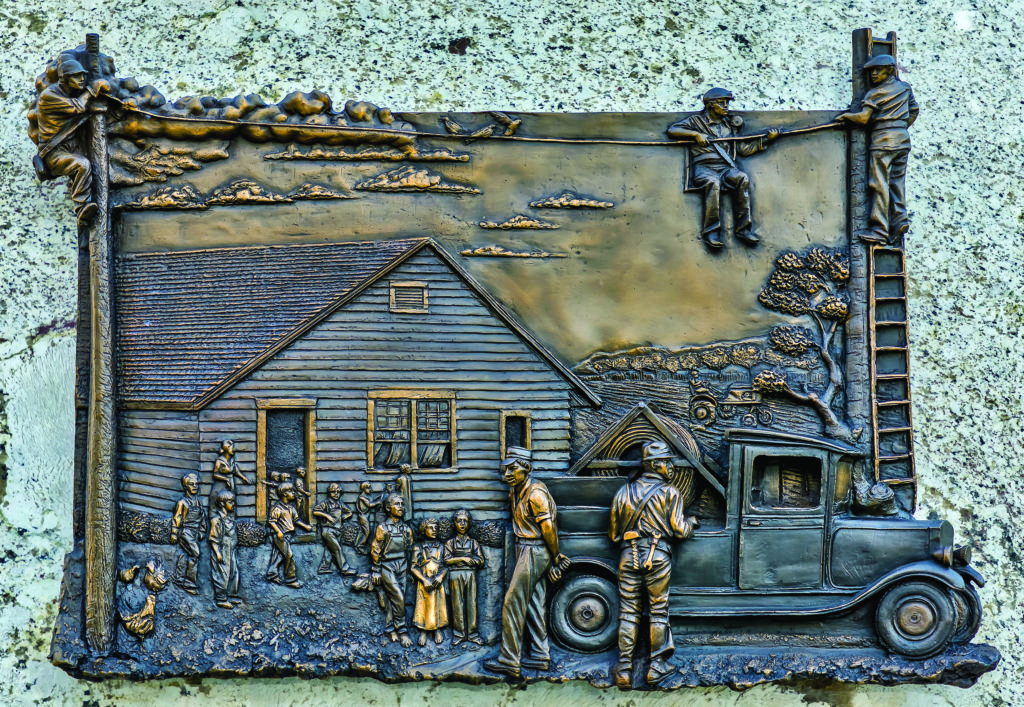
By Minnie Lamberth
The 16 bronze relief sculptures installed on granite bases at the foot of the Alabama State Capitol take visitors on a journey through pivotal moments in Alabama history.
“Each of those moments represents something that was kind of a watershed for the state — where life before and life after were different,” says Jay Lamar, who served as the Alabama Bicentennial Commission’s executive director during the three-year celebration of the state’s 200th anniversary.
The Alabama Bicentennial Park, a lasting legacy of this celebration, is the collective effort of dozens of individuals, including state leaders, state agency professionals and a renowned sculptor, who envisioned a public art project that is also an all-encompassing history lesson.

“Of all the projects that we did for the bicentennial, it is the biggest, the most complicated and I hope the most long lasting in terms of it being available for many generations to come,” Lamar says.
Located in green spaces near Dexter Avenue and Bainbridge Street in downtown Montgomery, the park puts history on display for anyone who wants to walk through the sculpture and narrative plaques. The journey begins with an ancient sea that covered the state and eventually receded to reveal a land rich in natural resources. This history goes on to highlight early Native American societies that established settlements, the battles that preceded statehood, and the constitution that provided entry into the United States.
Rural electrification spotlighted
The story continues through difficult days of secession, war and emancipation. Industrialization is part of this history, as is the 1901 constitution that enshrined inequitable barriers to the right to vote. The diversification of the state’s agricultural economy followed the boll weevil’s destruction. Then, as the state’s citizens made it through the Great Depression, electricity reached rural communities, and Alabamians did their part in World War II.
By the mid-1900s, Alabama became the center of the nation’s civil rights movement while also being central to the international Space Race. And the entry into the 21st century brought globalization to the economy, which now benefited from the automotive industry, aviation manufacturing, biotechnology research and other advancements that laid groundwork for a third century of statehood.
Lamar says state Sen. Arthur Orr, R-Decatur, who served as chairman of the commission, provided a challenge that every child in Alabama be able to see something from his or her own area in the park. “He gave us the charge that this needed to speak to the whole state,” Lamar says. In addition, children are incorporated in the sculpture as a reminder to young visitors that they are part of history and can help make history.
The park was authorized by legislative act in 2017, beginning a two-year process to complete the project in time to recognize two centuries of statehood on the official anniversary date of Dec. 14, 2019. “The big thing for us was there was a very much an immovable deadline,” Lamar says. “There were some moments when there was concern about whether we were going to get there, but at the end of the day, we did.”

A request for proposals issued by the Alabama State Council on the Arts generated interest from sculptors around the country and ultimately led to the selection of Caleb O’Connor of Tuscaloosa. O’Connor brought in Craig Wedderspoon, a sculpture professor at the University of Alabama, as a project collaborator overseeing foundry operations and base installation.
“Figuring out what the content would be was another process, and the Archives and History was very involved in that,” Lamar says. Then there was the fabrication of the sculpture as well as the preparation of the site, which is managed by the Department of Finance and adheres to regulations for a historic space overseen by the Alabama Historical Commission. As advisory groups weighed in on content and artistic expression, input was gathered from across the state.
There were “a lot of voices and lots of perspectives represented in the planning and execution of the park and the monuments,” Lamar says. “It was one of the most collaborative projects that we did, and I think all to the good for what the outcome was.”
A welcome opportunity
For artist Caleb O’Connor, that collaboration was welcome. “I viewed the opportunity to work with all those people as an asset in order to study the history, to get a fully understanding of what happened,” he says.
O’Connor, who grew up in Hawaii, attended the Maryland Institute College of Art, where he studied painting, and was later awarded a Fulbright grant to study in Italy for nine months. He moved to Alabama in 2009, when he began working on a series of large-scale historical paintings for a federal courthouse, and today he operates an independent studio in Tuscaloosa.
“I’m very familiar with the history of Alabama through other art projects that I have done,” O’Connor says, and he was attracted to the opportunity to study it more in depth. He also was drawn to the project because of his love of sculpture. “Being able to execute such a large scale public art project brought me close to the Italian masters I had studied,” O’Connor says.
“To do projects of this scale with the art of high relief which is what you see all throughout Italy, it became exciting to me.”
A documentary of the park’s development, “Alabama: In the Making,” is available on YouTube.
Plan your visit
Alabama Bicentennial Park is located in the State Capitol complex near the intersection of Dexter Avenue and Bainbridge Street. It occupies the green spaces adjacent to the Lurleen Wallace Office Building and the Attorney General’s Building in the 500 block of Dexter Avenue.
The park is open 6 a.m. to 8 p.m. year-round and is well lit at night. Admission is free. Metered street parking is available on several surrounding blocks. All street parking is free after 5 p.m. and on weekends.




